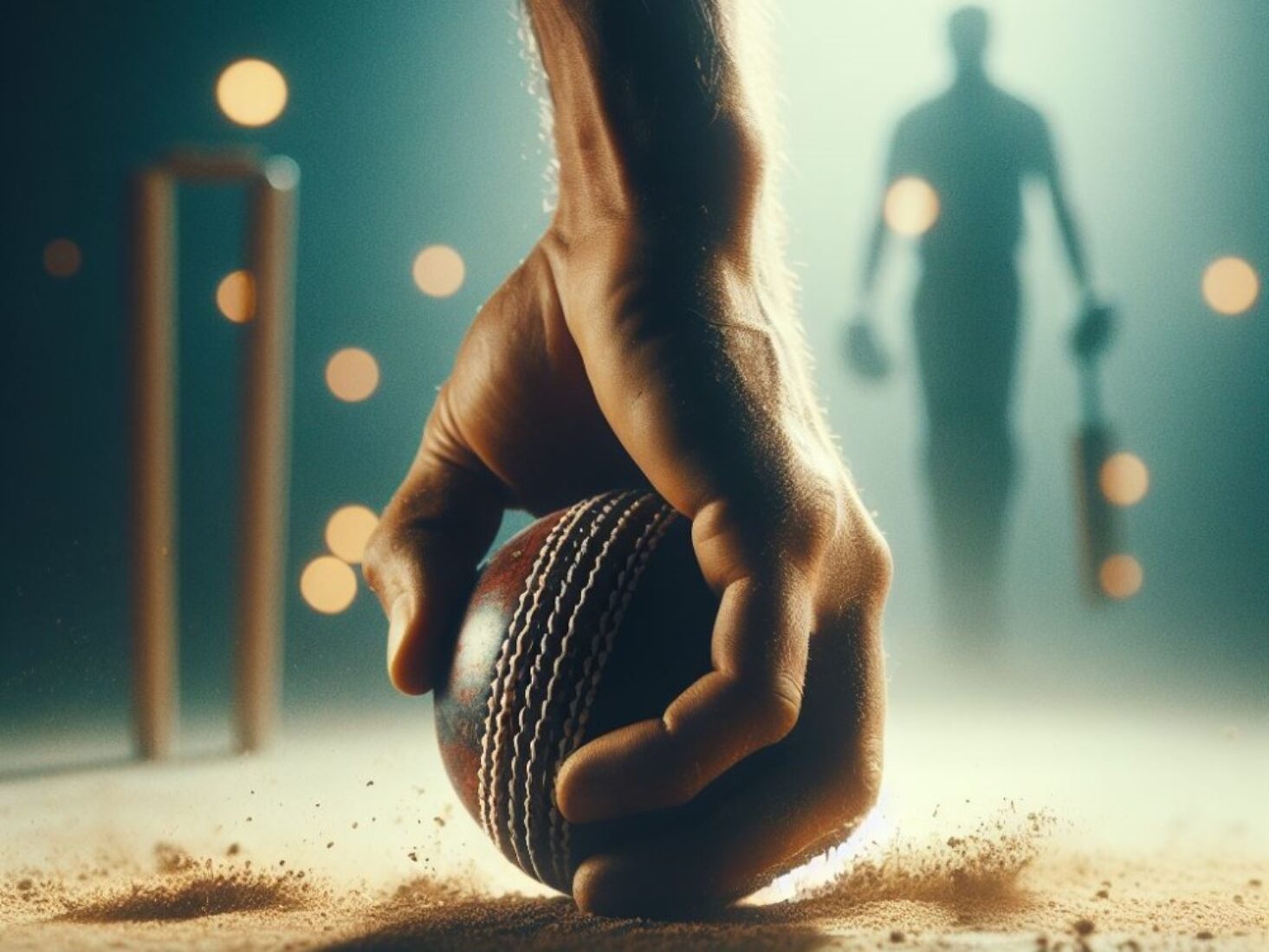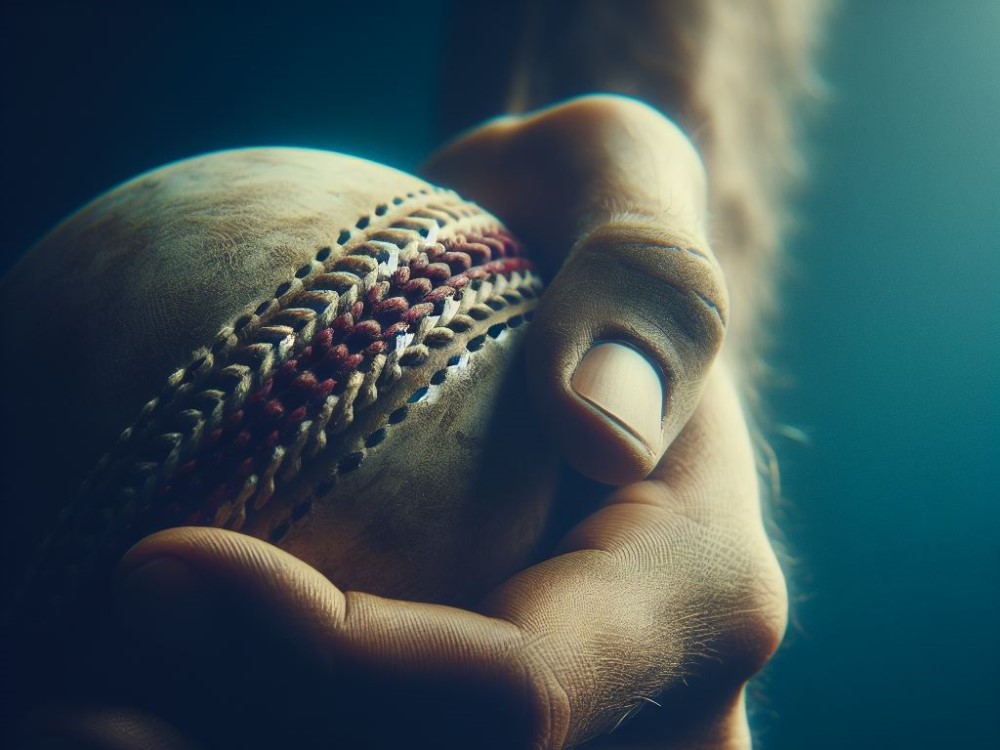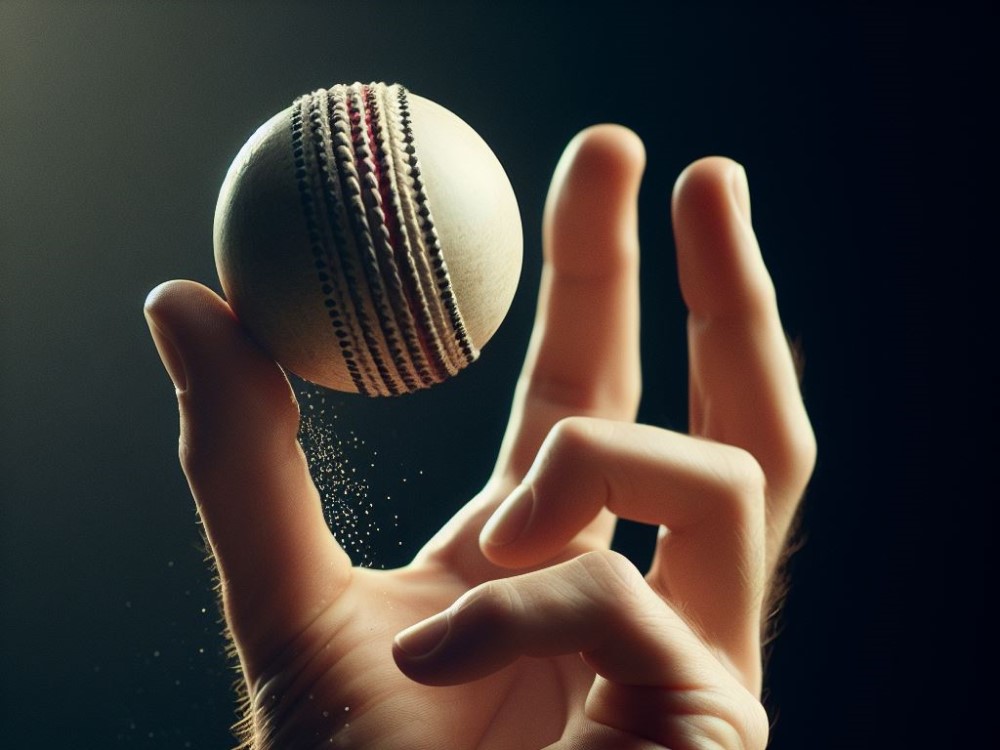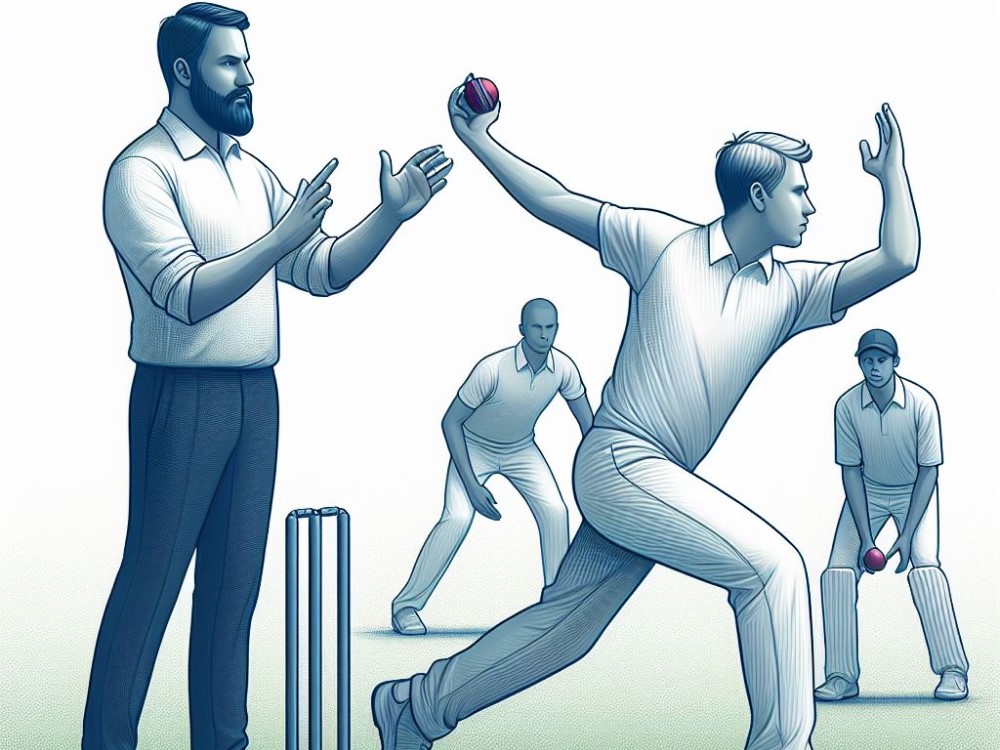
What Role Does Hand Grip Play In Cricket Bowling
Cricket bowling involves various techniques and skills, one of the most important being the hand grip on the ball. The way a bowler holds the ball greatly influences the outcome of their delivery. The hand grip serves multiple purposes in cricket bowling, including generating spin, creating swing, and controlling the ball.
Generating spin is essential for spin bowlers, and the hand grip plays a crucial role in achieving this. Different types of hand grips, such as the off-spin grip and leg-spin grip, are used to manipulate the ball and create spin as it is released from the hand.
Similarly, in swing bowling, the hand grip determines the movement of the ball in the air. Gripping the ball in a specific way allows bowlers to swing the ball towards or away from the batsman, making it challenging to hit.
The hand grip contributes to controlling the ball during the delivery. The grip determines the direction and trajectory, enabling bowlers to maintain accuracy and consistency in their bowling.
Cricket bowling utilizes various hand grips, each with its specific technique. Off-spin grip, leg-spin grip, and fast bowling grip are some common types used by bowlers. Each grip requires proper finger positioning and wrist action to achieve the desired outcome.
The influence of hand grip extends beyond the initial release of the ball. It affects the overall bowling technique, including finger position and wrist action. Bowlers adjust their hand grip to incorporate variations in deliveries such as yorkers, bouncers, and slower balls.
However, mastering the hand grip in cricket bowling is not without its challenges. Factors like grip pressure, sweaty hands, and maintaining consistency can pose difficulties for bowlers. Overcoming these challenges requires practice, focus, and adopting certain techniques to improve hand grip.
Understanding the role of hand grip in cricket bowling is crucial for aspiring bowlers looking to refine their skills. It is an intricate aspect of the sport that requires precision, technique, and a deep understanding of the mechanics involved.
What is the Purpose of Hand Grip in Cricket Bowling?

A solid hand grip is crucial in cricket bowling, but what exactly is its purpose? In this section, we’ll uncover the importance of hand grip and how it impacts various aspects of the game. Brace yourself to discover how it contributes to generating spin, creating swing, and effectively controlling the ball.
Whether you’re a cricket enthusiast or new to the sport, get ready to unravel the secrets behind a bowler’s skillful hand grip and its impact on the game.
Generating Spin
Generating spin is a fundamental aspect of cricket bowling. The hand grip plays a significant role in achieving this objective. To successfully generate spin, bowlers employ various techniques involving finger position and wrist action.
In the case of off-spin, bowlers grip the ball with the middle and index fingers, with the seam angled towards the leg side. On the other hand, leg-spinners cock the wrist and apply pressure on the top of the ball using the index and middle fingers.
These different grips directly influence the revolutions applied on the ball, resulting in the desired spin direction. The ability to generate spin often confuses batsmen, making it more challenging for them to play the ball. It is interesting to note that spin bowlers frequently combine finger spin and wrist spin techniques to produce unpredictable spin effects.
Creating Swing
- Creating swing in cricket bowling is a crucial skill that can greatly impact the outcome of a match. Here are the steps to create swing:
- Select the appropriate ball for swing bowling, preferably one with a shiny and smooth surface.
- Hold the ball with the “fast bowling grip” technique, ensuring a secure and comfortable grip.
- Place the index and middle fingers on one side of the ball, with the thumb supporting it from the other side.
- Position the ball in such a way that the shiny side faces either the leg side or the off side, depending on the type of swing desired.
- While delivering the ball, focus on generating speed, as it plays a crucial role in creating swing.
Controlling the Ball
To effectively control the ball in cricket bowling, follow these steps:
- Hold the ball with a firm grip to maintain control throughout the delivery.
- Adjust your finger positioning to manipulate the ball’s trajectory.
- Use wrist action to add spin or alter the direction of the ball.
- Vary your grip to produce different deliveries like yorkers or slower balls.
Fact: The ability to control the ball is crucial in cricket bowling as it allows the bowler to deceive the batsman and create scoring opportunities for the fielding team.
Different Types of Hand Grips in Cricket Bowling
Discover the secrets behind effective cricket bowling by exploring the different types of hand grips used in the sport. From the off-spin grip technique to the leg-spin grip technique and the fast bowling grip technique, each sub-section of this article will uncover the key elements of these gripping techniques.
Delve into the fascinating world of hand grips in cricket bowling and unlock new insights into the game. Get ready to improve your skills on the pitch and leave your opponents in awe.
Off-Spin Grip

The off-spin grip is a pivotal technique for a spinner in cricket bowling. To achieve an effective off-spin delivery, the bowler firmly grasps the ball in a specific manner.
The fingers are precisely positioned on the seam, with the index and middle finger exerting pressure to generate spin. The off-spin grip enables the bowler to create a clockwise rotation, resulting in the ball turning away from the right-handed batsmen.
This grip is crucial for varying the delivery and outsmarting the batsman. Esteemed bowlers like Muttiah Muralitharan and Ravichandran Ashwin have completely mastered the art of the off-spin grip, transforming it into a formidable weapon within their bowling repertoire.
Leg-Spin Grip
Leg-spin grip in cricket bowling holds the key to generating spin, creating swing, and controlling the ball. This specialized technique allows bowlers to deceive batsmen with remarkable variations in flight and trajectory.
With the right leg-spin grip, bowlers can unleash the magic of the turning ball, leaving opposing teams in a spin of confusion. It’s all about mastering the art of wrist movement and positioning to make the cricket ball dance to their command. Let’s unlock the secrets of leg-spin grip and discover how it transforms the game.
Fast Bowling Grip
Discover the art of fast bowling grip in cricket and unlock the power in your hands! In this section, we’ll dive into the secrets of the off-spin grip technique, leg-spin grip technique, and the highly effective fast bowling grip technique.
Uncover the techniques that have been used by renowned bowlers to spin their way to victory. Whether you’re a budding bowler or a cricket enthusiast, this section will provide you with insights and tips to perfect your grip for an unstoppable delivery.
Off-Spin Grip Technique
- Mastering the essential skill of the off-spin grip technique is crucial for cricket bowlers who want to generate spin.
- To achieve this technique, hold the ball with your index finger and middle finger positioned on the seam.
- For added support, place your ring finger and little finger on either side of the ball.
- It’s important to maintain a firm grip on the ball without squeezing it too tightly.
- During the delivery, make sure to have a relaxed wrist position to allow for wrist action.
- To spin the ball effectively, focus on applying pressure with your fingers on the seam while releasing it.
By practicing and refining the off-spin grip technique, cricketers can skillfully vary their deliveries, deceive batsmen, and contribute to the success of their team.
Leg-Spin Grip Technique
The leg-spin grip technique is an essential aspect of cricket bowling that requires specific steps for delivering the ball effectively. To master the leg-spin grip technique, follow these key points:
- Hold the cricket ball with the index and middle fingers placed along the seam.
- Gently position the ring finger and little finger on the side of the ball to provide support and stability.
- Rest the thumb either on the seam or slightly across it to enhance control.
- Maintain a slight gap between the palm and the ball to allow for wrist movement.
- Angle the wrist appropriately to generate spin and impart revolutions on the ball.
By diligently following these steps, aspiring bowlers can develop accuracy, deception, and the skill to sharply turn the ball. Regular practice and refinement of the leg-spin grip technique will ultimately lead to delivering effective leg-spin deliveries.
Fast Bowling Grip Technique

- To perform a fast bowling grip technique in cricket, follow these steps:
- Hold the ball with your dominant hand.
- Place your index, middle, and ring fingers parallel across the seam.
- Keep your thumb underneath the ball for support.
- Create a firm grip while allowing flexibility in your wrist.
- Position your non-dominant hand on the side of the ball for control.
For a successful fast bowling grip technique delivery, the grip technique plays a crucial role in generating pace, accuracy, and movement. Maintain a consistent grip, practice regularly, and seek guidance from experienced coaches to improve your technique. Remember to focus on your wrist position, grip pressure, and body alignment while executing fast bowling grip technique deliveries.
The Influence of Hand Grip on Bowling Techniques
When it comes to cricket bowling, the hand grip holds a significant influence on the overall technique. We’re going to explore how the way a bowler positions their fingers and the action of their wrist can impact their delivery.
We’ll take a closer look at the variations in grip for different types of deliveries. Get ready to uncover the secrets behind the role of hand grip in mastering the art of cricket bowling!
Finger Position and Wrist Action
In cricket bowling, the placement of finger position and the action of the wrist play a vital role in achieving the desired outcomes. To optimize your performance, it is crucial to follow these steps:
- 1. Finger position: Ensure that you place your index and middle fingers along the seam to have better control and grip over the ball.
- 2. Wrist action: While releasing the ball, maintain a firm wrist position to generate spin or swing.
- 3. Practice finger strength exercises regularly to enhance your grip and handling abilities.
- 4. It is advisable to seek guidance from experienced bowlers and coaches to refine your finger position and wrist action techniques.
By mastering the correct finger position and executing precise wrist action, you can greatly enhance your bowling skills and become a more effective player on the field.
Variations in Grip for Different Deliveries
When it comes to cricket bowling, variations in grip for different deliveries are crucial. Here are some key grip variations to consider:
- Off-Spin Grip: Holding the ball between the index and middle fingers, with the thumb resting on the seam. This grip enhances the chances of spinning the ball away from the right-handed batsman.
- Leg-Spin Grip: Placing the index and middle fingers across the seams while the thumb supports the ball. This grip encourages the ball to spin towards the leg-side of the right-handed batsman.
- Fast Bowling Grip: Gripping the ball with the index and middle fingers alongside the seam, with the thumb underneath. This grip allows for increased pace and bounce, making it challenging for the batsman.
By choosing the appropriate grip for different deliveries, bowlers can deceive the batsman and enhance their chances of taking wickets. It’s essential to practice and refine these grip variations for optimal performance on the cricket field.
Common Challenges and Tips for Improving Hand Grip

Struggling with your hand grip while bowling in cricket? Don’t worry, this section is all about tackling the common challenges associated with hand grip and providing you with valuable tips to enhance your performance.
From managing grip pressure to dealing with sweaty hands, we’ve got you covered. Get ready to learn how to maintain consistency in your hand grip, and take your bowling game to the next level!
Grip Pressure
Bowling grip pressure is a critical component for every cricketer. The adequate grip pressure assists in maintaining control, accuracy, and generating the desired swing and spin. Here are some important points to consider regarding grip pressure:
- Strike the right balance: Firmly grip the ball while avoiding excessive squeezing, as it can restrict hand movement when delivering.
- Consistency is key: Maintain a consistent grip pressure throughout your bowling action for improved control over the ball.
- Adapt to the conditions: Adjust the grip pressure based on pitch conditions, ball condition, and weather to achieve the desired movement.
- Promote finger flexibility: Allow your fingers to remain flexible, as excessive grip pressure can restrict your ability to produce variations in bowling.
- Stay relaxed: Prevent unnecessary tension in your hand and forearm muscles. A relaxed grip can enhance your overall bowling performance.
Pro-tip: Regular practice helps develop a strong yet adaptable grip that enables you to maintain control in different bowling situations.
Sweaty Hands
Having sweaty hands can be a challenge when it comes to proper ball grip in cricket bowling. However, there are several tips to help you tackle sweaty hands while maintaining a good hand grip:
- Utilize grip aids such as talcum powder or resin to absorb moisture and enhance your grip.
- Before gripping the ball, ensure to wipe your hands with a towel or cloth.
- Regularly change your grip to keep your hands dry.
- Experiment with different types of grips to discover the one that suits you best.
- Consistent practice is key to developing strength and control in your grip.
Maintaining Consistency
Maintaining consistency in hand grip is crucial for bowlers in cricket. It is important to maintain consistency in order to ensure accuracy and control over the ball. Here are some useful tips that can help bowlers maintain a consistent hand grip:
- Practice regularly: Bowlers should practice holding the ball with different grips on a regular basis. This will help develop muscle memory and improve consistency.
- Consistent grip pressure: It is crucial to maintain a consistent pressure on the ball with both fingers and palm. This helps to avoid any variations in the grip.
- Pay attention to hand position: Bowlers should pay close attention to the position of their fingers and hand while gripping the ball. This ensures consistency in the release.
- Focus on technique: Working on wrist action and finger position is important to achieve a stable and repeatable grip. This will contribute to maintaining consistency.
- Experiment and refine: Bowlers should experiment with different grip styles and then refine them based on their comfort and overall performance.
By implementing these techniques and practicing regularly, bowlers can successfully maintain consistency in their hand grip. This will ultimately lead to improved performance on the field.





